Wooden shelves in the bathroom: pros, cons and description of types
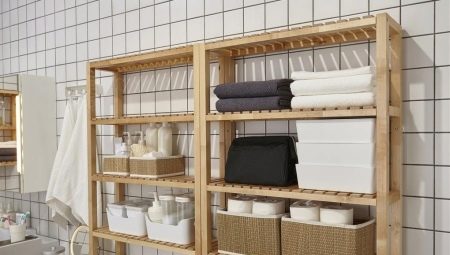
In addition to plumbing equipment, there is a lot of things to fit in the bathroom. Even if the sink is built into a spacious cabinet, and an impressive usable space is hidden behind the screen under the bathroom, additional surfaces may still be needed. The task will be solved by shelves made of a variety of materials, including wood.
Features of the use of wood in the bathroom
The use of wood has long ceased to be considered unacceptable for places with high humidity. The wooden floor, walls, furniture in the bathroom will not surprise anyone, because you can use moisture-resistant rocks or protective treatment.

The most stable are the exotic inhabitants of the tropics:
- hevea - rubber tree, its composition "repels" water and is not subject to decay;
- teak - traditionally used in shipbuilding, on yacht decks, in the manufacture of outdoor furniture;
- merbau - surpasses oak and teak in density, resists fungus, it was used in the construction of bridges and laying sleepers;
- bamboo - the lignified hollow stems of this cereal were previously used in the form of water pipes, and furniture made of glued bamboo is one of the most budgetary solutions for the bathroom.



Tropical wood has a high density and is saturated with oils - a natural water-repellent impregnation. Properly processed surfaces made of solid domestic species - larch, elm, beech, ash, oak are also able to perfectly exist in a humid environment. Furniture and bathroom shelves are usually protected in manufacturing.
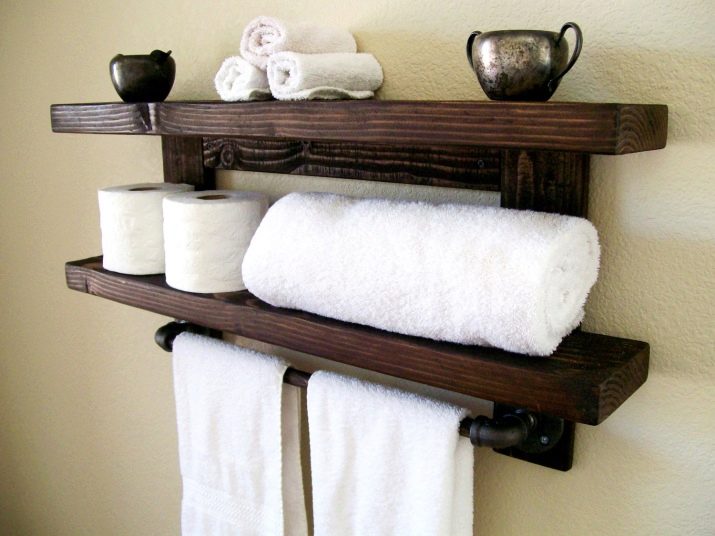
You can independently protect shelves made of untreated wood from moisture using:
- varnish;
- oils;
- impregnation;
- paints.
Tinted impregnations and varnishes do not hide the texture. These can be products from Tikkurila, Pinotex, Aquatex. If there is no task to preserve the wood pattern, after a layer of primer, you can paint the shelves with weather-resistant enamel in a color that matches the interior.


More affordable than solid wood shelves will be MDF or chipboard shelves. The boards are covered with veneer or laminated. The laminate layer recreates the texture of different species, such as decorative zebrano or luxurious rosewood. A high-quality, thick and elastic furniture PVC edge will protect the cuts and ends of the boards from moisture penetration, so pay attention to this element and do not purchase products with a budget, thin melamine edge.
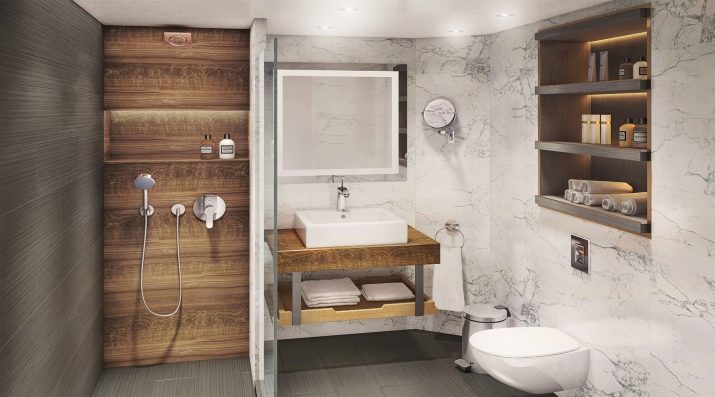
Advantages and disadvantages
The use of wood in the bathroom is experiencing a real boom, because today styles that focus on natural materials are super popular - Provence, loft, Scandinavian. Laconic dark wood shelves will fit perfectly into the minimalism of the Japanese style.
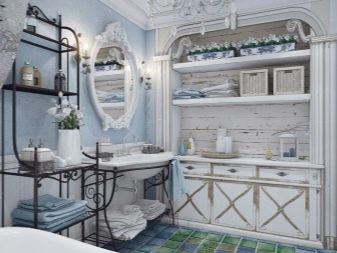
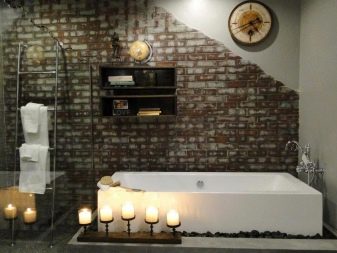
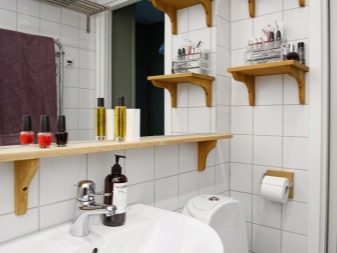

Hanging shelves are functional: a small space of the floor remains free, and all the necessary items are neatly placed.
Provided that they are securely fastened, wooden shelves will withstand a lot of weight, unlike glass or metal mesh. If the room allows, then a floor rack would be an excellent option.
Pros of wooden shelves:
- current eco-style;
- functionality;
- strength;
- many compositional and decorative solutions;
- harmonious combination with tiles and an interesting contrast with the shine of chrome plumbing;
- the possibility of self-production.

The disadvantage of wooden shelves is the need to care for the varnish or impregnation, which must be periodically updated. On MDF or chipboard shelves, the holes for fasteners must be closed with plugs. The bathroom must be properly ventilated. Wooden shelves must be securely fastened, they cannot be installed with Velcro and suction cups, like small lightweight models made of plastic and steel.
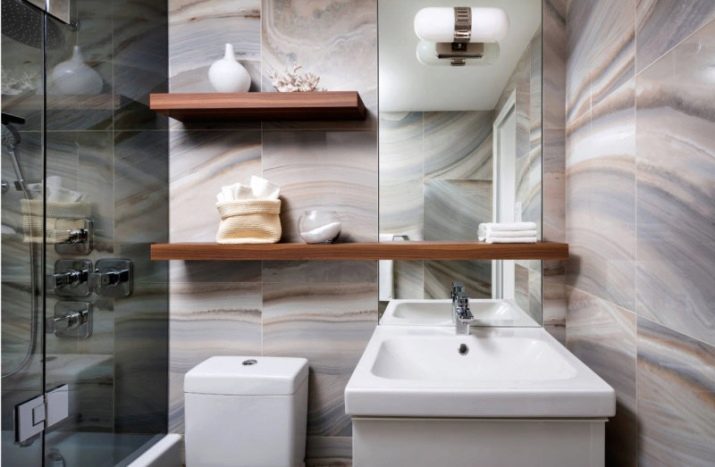
Varieties
Depending on the installation location, bathroom shelves can be:
- hinged;
- built-in;
- angular;
- floor-standing.
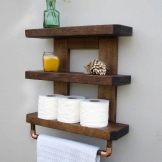
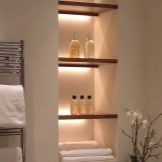
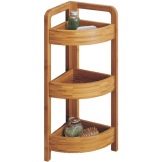

Hanging shelves are placed in any area where it is functionally necessary to have some accessories on hand: cosmetics - next to the mirror, shower accessories - near the bath, toothpaste and soap - under or above the sink, powders - over the washing machine. You can attach hooks or a bar for towels or bathrobes to the shelf. Items that are not often used can be stored on the shelf above the door.
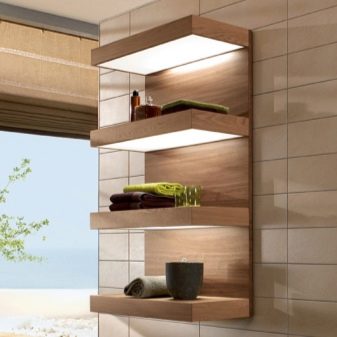

Corner shelves save usable space to the maximum. You cannot put large objects on them, but it is convenient to hold various small things, for example, beautiful perfume bottles.
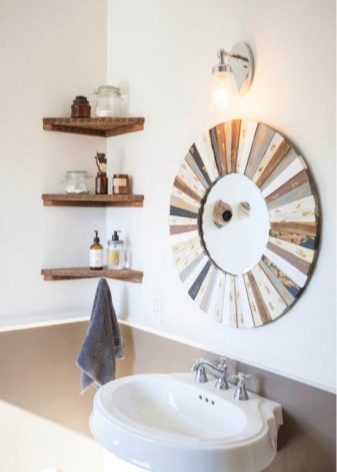
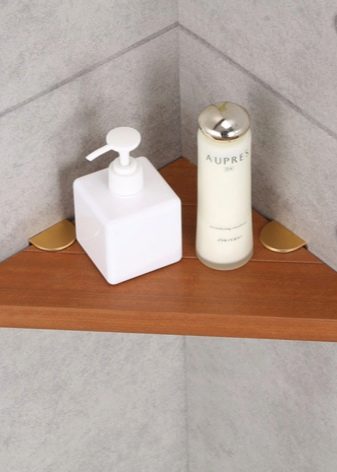
Built-in options are often installed in a prepared niche above the cistern (they store toilet paper and even books there) or in the wall above the bathroom (arrange shampoos, gels, scented candles, folded bathrobes).

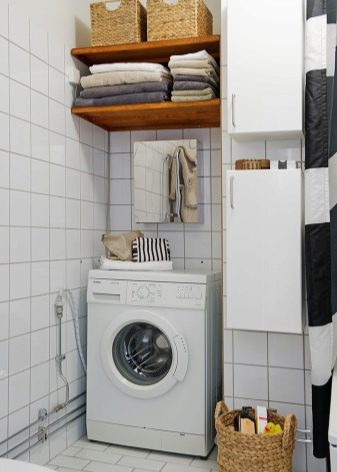
A bookcase or a small-sized but roomy rack is convenient for mobility. A fashionable option is a side-mounted ladder rack with step shelves.
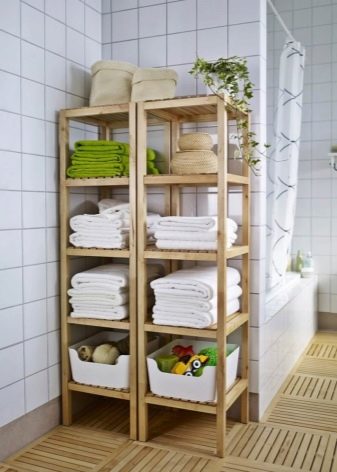
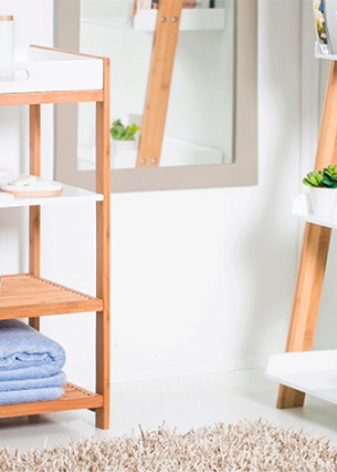
A sliding shelf on the bathtub will allow you to arrange a spa session: it will fit a glass of wine, fruit, a book and a phone.
On some models, you can attach a tablet and comfortably watch a movie while basking in the foam.
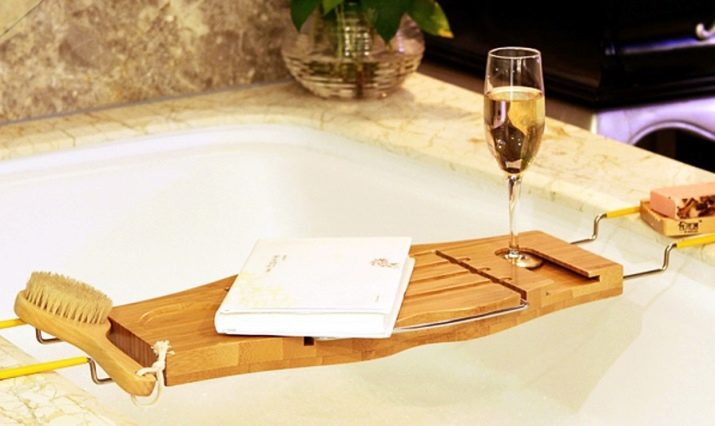
For information on how to make a wooden shelf for a bath, see the video.








